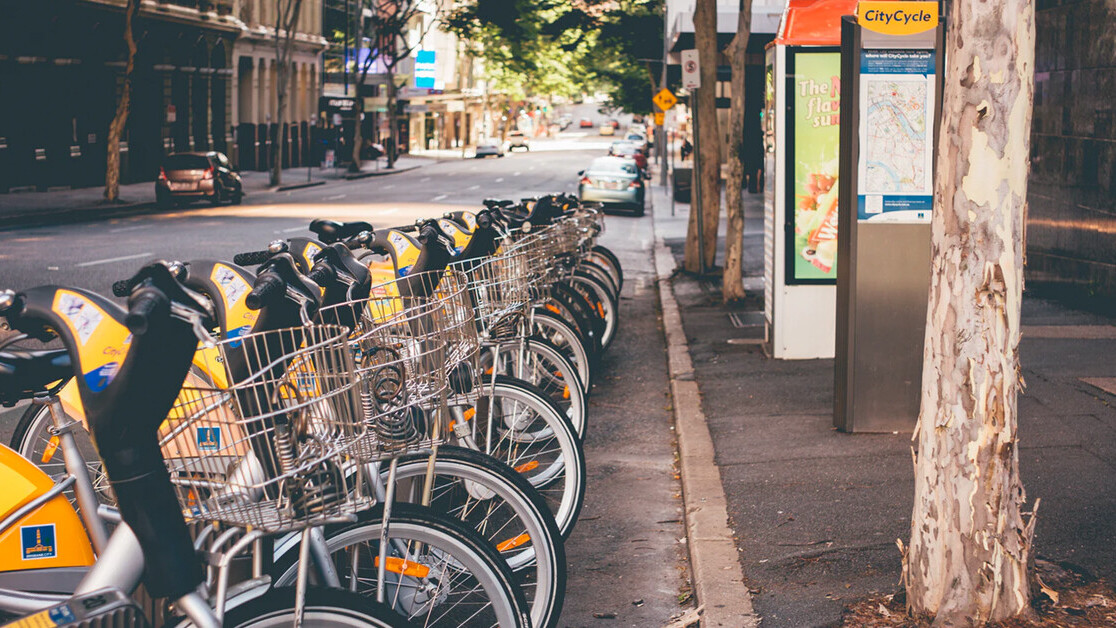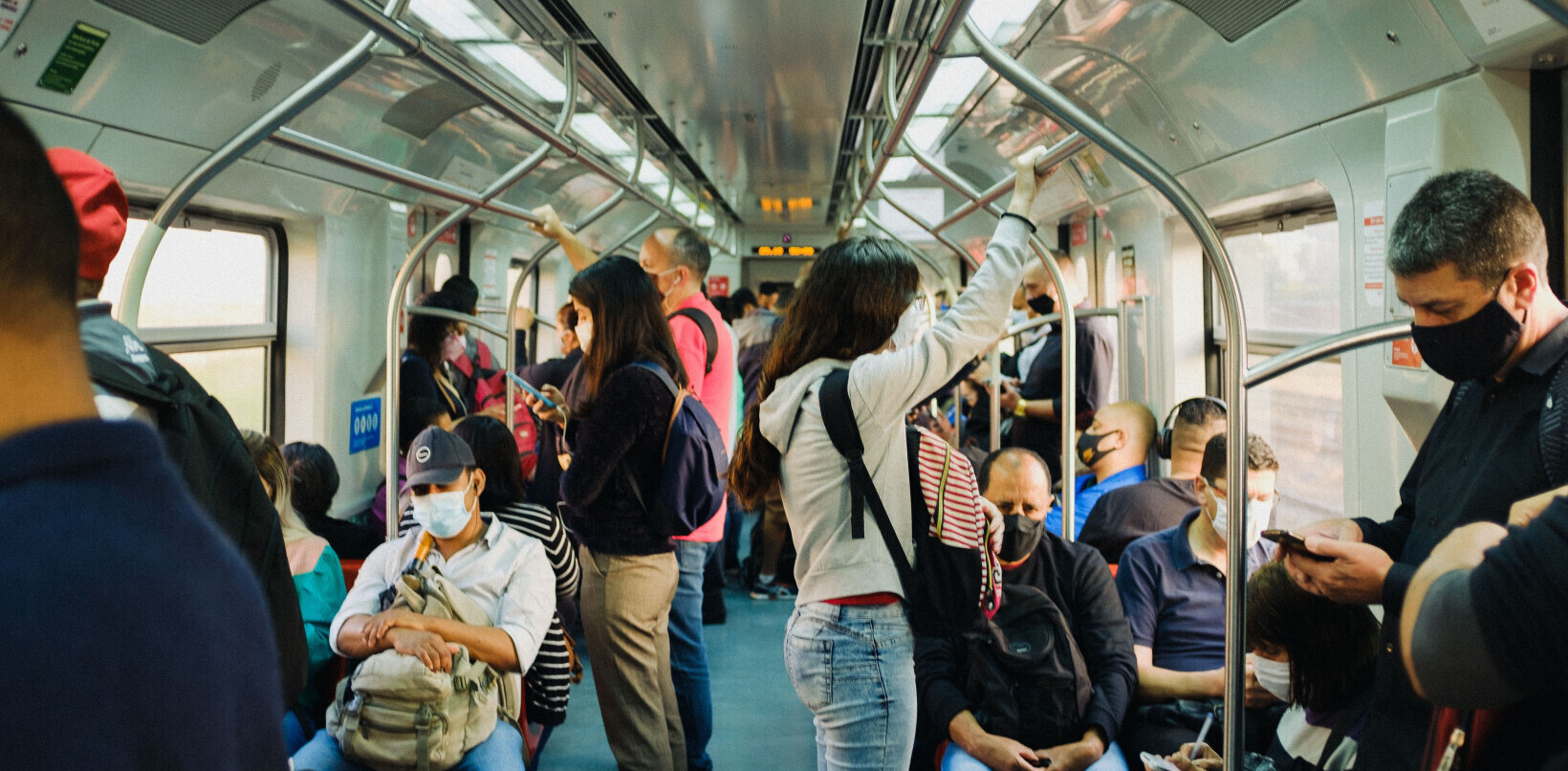The current crisis is first and foremost humanitarian, with 300k casualties to date worldwide and massive joblessness. It is also economic, with almost all companies having financial difficulties and many collapsing. However, a few sectors are currently booming (e.g. deliveries), some will benefit from a crisis-induced tailwind, while others will continue to suffer for years to come.
Many countries are still largely shut down, while others are re-opening. Economies are initiating a reboot. Depending on the forecasting analysts, the 2020 automotive market may be down 10-15% in China and 15-25% in Europe and the USA. Even if it is too early to assess how much damage has been done, most actors are reducing their OPEX and CAPEX. Health-related behaviors are changing. This has started to trickle down to startups and tech development.
[Read: Here’s how public transport in European cities must adapt to ‘the new normal’]
The following anticipation of the likely winners and losers of the Covid-19 crisis is based on the drivers behind the various segments that constitute the future of mobility. Overall, I do not foresee any aspects of the pre-crisis future being completely absent from the post-crisis future. I rather anticipate an acceleration for some segments and deceleration for others. Likewise, programs with a long term benefit will trigger more collaboration to share costs and risks.
The likely winners
Electrification. In my article published last month on the impact of the crisis on EVs, I argued that Covid-19 will result in different outcomes depending on the region, though the net should be positive. Drivers impacting the trend include local, crisis-induced financial incentives, increased awareness of the impact of fossil fuel-powered vehicles on air quality (the air has been exceptionally clean in most urban areas with people staying home), as well as lower fuel prices.
CO2-related regulations in Europe and China will likely not soften, nor should they, though any associated penalties may be delayed. Plug-in vehicle-specific incentives have been extended in China and will likely be put in place in several European countries, making EVs a winner in these regions. On the contrary, relaxed CAFE standards, the lack of federal appetite for clean vehicles , and likely lingering low fuel prices in the USA, will likely make EVs a loser here, except probably for the more CO2-sensitive coasts. Several OEMs with a significant presence in Europe or China re-confirmed their EV investment programs, sometimes at the expense of ICE-powertrain updates.
Private micromobility. Micromobility has gained massive traction globally as a shared mode starting in 2017. Whereas sharing anything is currently a losing proposition — this will linger — scooters, bikes , and mopeds are now more broadly integral to our mobility habits. As a result, bike sales are exploding (and possibly scooter sales but I have no evidence of this). This will likely last as some people will be reluctant to go back to public transit or their private cars if they can avoid it. Many cities are also creating temporary bike lanes. Others such as Milan, London, and Seattle are making them permanent as a way to alleviate pollution and build on newly acquired good habits. Italy is offering 500€ incentives to buy bikes and scooters. Privately-owned micromobility should be a clear winner.
e-Commerce. Widespread confinement has given a massive boost to e-commerce and home deliveries as analyzed in this New York Times article. More people are shopping online now, accelerating a pre-existing long term trend. Amazon hired over 100k people to address the increased demand. Uber has seen its Eats business go up about as much as its ride-hailing business went down (about 80%). Its Russian competitor Yandex is observing a similar pattern. Walmart saw the number of monthly online grocery app downloads triple. Whereas the current spike in e-commerce is temporary, the crisis will likely have a positive impact on its long term trend.
Last-mile delivery. Companies involved in last-mile delivery are set to gain from the crisis. This segment was already quite active, as described in my Dec. 2019 article. We can also expect retail, e-commerce , and logistics companies to invest in technologies even more than before — see Amazon’s case in my article published in Oct. 2019. In the short term, many ride-hailing companies have redeployed their drivers to deliver food. Instacart and DoorDash are in the process of raising hundreds of millions of dollars. Target just announced it was buying the assets of same-day delivery startup Deliv. More investment should be expected.
Autonomous cargo transportation will likely benefit from the crisis as well. The very painful unemployment spike will free up resources for more deliveries and reduce the existing driver shortage, but this will not last. The positive impact of the crisis on the long term e-commerce trend should drive more investment in autonomous driving tech and complete solutions for goods deliveries, in particular for the last mile, both on roads and on sidewalks.
Customer experience. Tesla will likely continue to benefit not only from its products but also from its direct distribution. While dealers are/were not allowed to open, Tesla has continued to forge ahead, even increasing sales in some markets and becoming the #1 brand in the UK in April. Likewise, used car platform Carvana has gained market share in the USA, thanks largely to its online processes. Traditional dealers are marching full steam towards pure online sales and contactless deliveries. Customers will likely benefit from less friction in the sales process.
Dealership tools. Customer behavioral shift towards more online is expected to last, as it parallels other shopping experiences. Most dealers and repair shops are trying to adapt extremely quickly to match the Tesla and Carvana models. Companies involved in digitalizing processes for new and used cars sales and services, such as dealer management systems (incl. the complete promote-sell-finance-insure process) or vehicle remote health monitoring will benefit.
The likely losers
Automotive supply chain. The supply chain as a whole, i.e. suppliers, OEMs and dealers, is an obvious loser, with a major impact in 2020 and part of 2021. Budgets are revised downwards through filters such as (1) whether an item has a direct impact on the next 2-3 years’ top line and (2) if it will contribute positively to the bottom line. According to a recent survey by CLEPA, the European Association of Automotive Suppliers, 90% expect revenues to fall in 2020, 84% plan to cut investment, and 78% to reduce their overhead. Nearly 40% have already started to cut R&D budgets; many others expect to do so (see below).
Shared micromobility has come to a full stop in most countries. Many operators will close down as a result. Others with complementary positions will join forces. The excessive valuation of some are already dropping massively, as demonstrated by Lime’s recent $170M round led by Uber at a valuation down 80% from the previous round. I expect shared mobility will regain significant traction once the industry finds solutions to reduce the risk of infection. Indeed, shared micromobility remains a very good solution for short distances or as feeders to public transit.
Ride sharing, car sharing. These services suffer from both home confinement and the risk of infection. Riders have reverted to personal cars, walking , or biking. Ride hailing has been badly hit with volumes dropping 60-80%. Operators are taking actions to protect drivers and riders, with limited effect. Some consolidation is to be expected, benefitting those with strong cash reserves. Likewise, fleet-based and peer-to-peer car sharing is heavily impacted. Confidence in the latter will be harder to rebuild than in the former as standardized measures to protect riders will be harder to deploy. As of now, GM shuttered its (already suffering) car sharing program, Maven.
Autonomous driving tech for passenger cars will suffer in the near term. OEMs will prioritize electrification (a must-have), more software integration (OTA update, new revenue-generating services), and safety-inducing ADAS over automation. Startups involved in AV hardware (Lidar, radar) and software (mapping, simulation & validation…) have already been suffering for the past 6-12 months, many having problems raising funds. Before Covid-19 hit, some initiated a shift to other use cases such as surveillance, logistics automation, farming/mining, or traffic management. This shift will likely accelerate for those that survive. However, the most mature companies will continue to forge ahead as automation remains in the future of transportation. In this regard, Waymo just added $750M to close a $3B investment round.
Public transit remains heavily impacted after coming almost to a full freeze or a very significant drop in capacity for weeks. Ridership often came down 80-90% where some traffic remained, as is the case in the USA. As capacity slowly comes back up, commuters will remain reluctant to pack in again on metros, buses, and tramways as shown by this survey performed in London by engineering firm Systra. The short term modal shift to personal vehicles is not sustainable because of its impact on congestion and personal budgets. However, the modal shift towards micromobility and walking will likely linger. Lastly, public transit may suffer from future budget restrictions as local administrations will see reduced tax revenue in the short/mid-term.
Shuttles and robotaxis. In the near/mid term, these solutions will likely suffer from less investment in AV tech and new distancing habits. The more mature players (Navya, EasyMile, May Mobility) are generating revenue from pilots and limited commercial deployment, which will be restricted in the coming months. Bringing business back will require strong actions and communication regarding health safety. In the near term, this will result in consolidation — for instance, high profile startup Zoox is looking for a buyer, after raising $1B.
Other emerging tech. Several segments within the future of mobility will suffer in the short/mid term. Startups will collapse because their markets have temporarily dried up; corporate clients are much more reluctant to trigger paid Proofs of Concept and pilots right now. More selective VCs/CVCs will likely concentrate their investments on the most promising players, making it that much harder for others to extend their runway. Likewise, restrictions in corporate R&D budgets will delay the emergence of less promising or longer lead-time technologies.
I would be happy to develop this analysis in much more depth upon request and assist clients in making the right choices as they consider investing in the future of mobility. Please do not hesitate to reach out.
The Urban Mobility Daily is the content site of the Urban Mobility Company, a Paris-based company which is moving the business of mobility forward through physical and virtual events and services. Join their community of 10K+ global mobility professionals by signing up for the Urban Mobility Weekly newsletter. Read the original article here and follow them on Linkedin and Twitter.
This article was written by Marc Amblard, Founder & Managing Director, Orsay Consulting.

Get the TNW newsletter
Get the most important tech news in your inbox each week.









